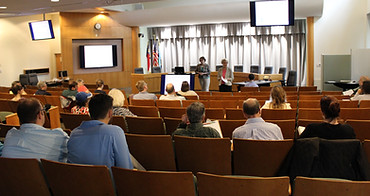PRESERVATION EDUCATION & PLANNING
Firefly can assist with preservation education and planning initiatives ranging from interpretive signage and brochures to preservation training events and classes to exhibit development and master planning. To schedule a presentation for your special interest group (for all ages!) or to schedule a training class in historical or genealogical research, visit the contact Firefly page.
FEATURED PROJECTS

Iowa Statewide Preservation Plan
Iowa
This project is underway, so check back for updates.
plan coming soon

Edenton Historic District Design Standards
Edenton, Chowan County, North Carolina
The Town of Edenton received a Historic Preservation Fund grant from the North Carolina SHPO to update the Design Standards for their local historic district. The standards were updated to reflect advances in energy technology, new developments in building materials, and the necessity for robust guidance for disaster preparedness. (project with hmwPreservation)

City of Raleigh Museum City Lab Exhibit Planning & Design
Raleigh, Wake County, North Carolina
The City of Raleigh Museum is located in the heart of downtown Raleigh in the historic Briggs Hardware Building. The new City Lab exhibit will be the museum's permanent, primary exhibit, providing an overview of Raleigh's history and how the city has been shaped by deliberate, thoughtful decision-making and through the involvement of the citizenry since the eighteenth century. This phase of the project will include concept planning and design developed through a series of public workshops and town hall meetings with people of all ages and backgrounds.

2017 Hillsborough Old Town Cemetery Workshop
Hillsborough, Orange County, North Carolina
This workshop focused specifically on cemetery preservation issues, and speakers presented sessions about ground-penetrating radar, gravestone damage and repair, and the challenges of preserving rural cemeteries. Attendees also participated in a working lunch, viewed an exhibit about the Hillsborough Cemetery Committee, and took tours of local cemeteries and historic sites. Attendees included staff from state and local governments, volunteers and staff of nonprofit organizations, and private individuals, and came from towns across the central and eastern regions of the state.

2016 Preservation North Carolina Annual Conference
Greensboro, Guilford County, North Carolina
One of Preservation North Carolina's most important programs is the annual conference, which brings together hundreds of preservationists from across North Carolina for a three-day education and networking event. The conference offers educational sessions at several venues, receptions and tours at historic sites, and honors the recipients of the annual preservation awards.

2016 Roots of the Piedmont CLG Training
Chapel Hill, Orange County, North Carolina
Communities committed to historic preservation at the local level may apply to the National Park Service for designation as a Certified Local Government. This designation allows communities to designate a historic preservation commission to oversee local historic districts and to apply for federal funding for preservation initiatives. Historic preservation commission members are required to attend annual training, and Firefly planned and executed a one-day training event for the Piedmont region, hosted by Preservation Chapel Hill.

The Carter House Master Plan
Franklin, Williamson County, Tennessee
The Carter House state historic site includes the historic Carter House, smokehouse, farm office, reconstructed slave cabin, and modern museum and interpretive center, as well as the Carter garden and orchard, both restored. A second parcel nearby includes the site of the Carter cotton gin house. During the Civil War, Union troops used this property, a piece of high ground, to defend from advancing Confederate troops to the south of this location. As a result, this site became the center of desperate fighting during the 1864 Battle of Franklin.
